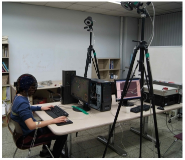PURPOSE This study assessed Taekwondo’s impact on functional fitness and health-related quality of life (HRQoL) in older women from South Korean multicultural families. METHODS Through purposive sampling, 16 participants were divided into an experimental group that underwent a 12-week Taekwondo training program and a control group without this intervention. RESULTS Pre- and post-intervention assessments showed that the Taekwondo group experienced significant improvements in both functional fitness and HRQoL. These findings suggest that Taekwondo could be an effective physical activity for enhancing the well-being of older women in multicultural families, advocating for inclusion of culturally sensitive physical activities in health promotion programs targeting this demographic. CONCLUSIONS This study contributes to the growing body of evidence supporting physical activity’s benefits for elderly populations, particularly in multicultural family dynamics.
[Purpose] The present study attempted to verify the effectiveness of an early childhood physical health improvement program (subsequently in the present study, KICCE Early Childhood Health Improvement Program) developed in Korea by modifying and improving the Mission-X: Train Like an Astronaut program developed by NASA to be suitable for children of ages 4 and 5. [Methods] The subjects in the study were 679 children at 7 facilities in Seongnam city, Osan city, and Yongin city, of which 4 were daycares and 3 were kindergartens. The participant group consisted of 339 children, and the control group consisted of 340 children. The program consisted of total 24 activities 3 times a week over 8 weeks, of which 8 activities were related to nutrition and 16 activities were related to physical activity, and in the 9th and 10th weeks, the 16 physical activities were reconfigured and performed 3 times a week. Physical parameters and related fitness parameters were measured before and after the program, and an ANCOVA analysis was performed in which descriptive statistics and scores before the program were the covariate variables. [Results] The results show that first, growth statuses of participant children were in the upper middle section of the distribution, and second, of the 6 fitness developments, flexibility, balance, and quickness were improved, and in most areas, boys and below-normal-BMI group showed beneficial effects. [Conclusion] Thus, KICCE Early Childhood Health Improvement Program is conclusively proven to be effective for early-childhood physical development.
PURPOSE This study was designed to propose a quantitative base training evaluation method through alpine ski training monitoring using a triaxial accelerometer. METHODS Twelve Korean alpine ski athletes, six each in France and New Zealand, participated in this study. Activity data during training and daily living were collected for 7 days via the Actigraph GT9X. The collected data were downloaded through ActiLife Ver 6.13.1. Energy expenditure was calculated with Freedson (2011), and the resting metabolic rate was corrected using the Harris & Benedict (1918) formula. Further, the physical activity intensity classification criteria and METs formula of Freedson (1998) were used to classify hourly activity intensity. The collected data were organized by date, time, intensity, and energy expenditure using Microsoft Excel 2016. Differences between weekdays vs. weekends and skiing vs. physical training were analyzed through a paired sample t-test using Windows SPSS 23 with a significance level of a=.05. RESULTS First, both groups showed repetitive on and off high-intensity activities during scheduled ski training and competition. Second, moderate-intensity activities accounted for an average of 6-10%, and the weekly total time and intensity of MVPA was very high. Finally, the group from France showed differences in total energy expenditure during weekdays vs. weekends (p<.05) and the energy expenditure of both ski training and physical training during weekdays vs. weekends (p<.05). The New Zealand group showed a difference in total energy consumption during weekdays vs. weekends (p<.05). CONCLUSIONS A systematic training program based on quantitative training evaluation should be developed for alpine ski athletes to maintain proper rest and exercise intensity levels.
PURPOSE High blood pressure and obesity pose significant health problems for older individuals. Previous studies showed that regular exercise improves physical fitness factors and decreases blood pressure and obesity. Therefore, this study investigated differences in blood pressure and obesity according to the physical fitness level of Korean older individuals using the National Fitness 100 data and used them to recognize the importance of maintaining physical fitness through regular physical activity or exercise for older individuals. METHODS From 2013 to 2019, a total of 218,848 subjects (men=74,271, women=144,577) aged ≥65 years who participated in the National Fitness 100 had their muscular strength, muscular endurance, cardiorespiratory endurance, balance, coordination, and flexibility measured, and they were ascribed a fitness level. Blood pressure, body mass index (BMI), percentage of bodyfat, and waist circumference were measured to compare the difference in fitness level. RESULTS There was a significant difference in the systolic and diastolic blood pressure in older men, and the diastolic blood pressure of older women by the fitness level (p<.001). In both older men and women, there was a significant difference in BMI, percentage of bodyfat, and waist circumference according to the fitness level (p<.001). CONCLUSIONS In conclusion, men and women showed different aspects in blood pressure, but Korean older individuals with having a high level of fitness managed their weight and body fat well. The decrease in obesity and improvement of physical fitness through regular physical activity and exercise could be a positive effect on maintaining health and extending healthy life years.
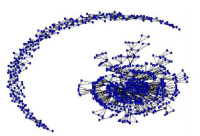
The purpose of this study was to identify the structure of knowledge in Sport Pedagogy field. Using bibliometric and social network analysis this study analyzed the keywords and citations appeared in Korean Journal of Sport Pedagogy and Korean Journal of Sport Science during 2006-2015 period. Total of 341 research papers which include 1301 keywords and 14826 citation were analyzed utilizing social network analysis as well as keywords frequency analysis, keyword co-occurrence, citation and co-ictation analysis. Results of this study showed that teaching, curriculum, and teacher education were three central theme in Sport pedagogy field. Key words such as physical activity, PE teacher, action research, and after school sport club activity were prominent research interests for scholard in the field. Quadradic Assignment Procedure analysis showed major research interests has not been changed between two periods of 2006-2010 and 2011-2015. Choi(2010)'s and You(2007)' books were most cited individual work and have influenced sport pedagogy researchers over the five years.

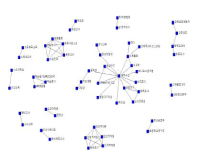

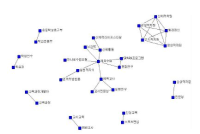
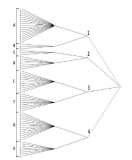
The purpose of this study was to examine the current status of school sport club(SSC) participation and to explore relationship between school sport participation and positive youth development. In order to do this, a survey was conducted with 403 elementary, middle, and high school teachers who are currently taking charge of SSCs, and also individual interviews were conducted with 22 students. In addition, the youths' developmental asset questionnaire was administered with 412 middle school students. The survey results from 403 teachers showed that SSCs have potential to contribute to positive youth development because teachers are placing an emphasis on character development as well as physical and social development through SSC activities. In addition, participants who regularly participate in physical activities had higher internal and external developmental assets than non-participants or irregular participants. Specifically, students participated in SSC more than twice a week had higher internal and external assets than students participate once a week. In addition, participants who engage more than one hour per session had higher internal and external assets except constructive use of time and social competence. Discussion and implications for organizing SSCs to provide developmental contexts and contents for positive youth development were provided.
Purpose This purpose of this study was to understand how physical education can contribute to healthy emotions and activities of human beings. Methods We analyze Eva Illouz's emotional capitalism theory, the position and role of emotions in Spinoza, and Durkheim's theory of religious sociology. Results Illouz shows that emotions are coordinated by rationality through the analysis of emotional capitalism, and that expressions of natural emotions are restricted and controlled even in the area of intimacy. In Spinoza, emotions are divided into three emotions: joy, sadness, and desire as concepts of body movements. Emotions reveal that they are closely related to human activity, and emotions of joy are calculated for human emotional development Emphasize the need to organize meetings of possible bodies. Durkheim argues that while society is placed in a religious position, society is the subject of individual praise and the reality of baptizing individuals into morality. At this time, festivals and rituals reveal individuals to be a powerful mechanism that leads to devotion to society and strengthens individual’s sense of community and morality. Conclusions Making physical education classes as festivals enhances students' sense of community. It can also be an activity that allows students to have healthy moral and emotional energy.
PURPOSE This study sought to explore elementary school (ES) teachers' avoidance of teaching model-based instruction (MBI) in physical education (PE) lessons. METHODS An open-ended questionnaire (n=93) and three focus group interviews (FGI ) were conducted with seven ES teachers. The collected data were analyzed using grounded theory analysis procedures (Strauss & Corbin, 1997). RESULTS Accordingly, we derived a grounded theory paradigm model composed of the core phenomenon (ES teacher’s avoidance of MBI in PE lessons), causal conditions (traditional difficulties of Elementary PE lessons, mismatch between MBI and ES teachers/PE lessons, lack of experience and teacher knowledge for/in MBI), contextual conditions (complex instructor organization, powerful trend of play), intervening conditions (value orientation for fun-focused PE, misunderstanding about PE curriculum), interactive strategies (focus on screening physical activities, preparing for PE lessons with YouTube rather than teacher guide book), and results (learner inclusive effects and de-curricularization). CONCLUSIONS ES teachers’ avoidance of MBI in PE lessons is a result of several reported problems with elementary PE lessons and is likely to be a recurring problem in the future. To encourage ES teachers’ MBI in PE lessons, efforts should be made to build practical knowledge of model use in pre- and in-service teacher education.
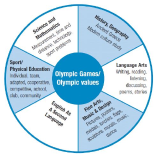
[Purpose] This study aims to examine necessity and characteristics of the K-OVEP, and discuss ways of settle and spread the program stably through cases applied in school settings. [Methods] To do so, educational components and curriculum of the K-OVEP was represented by analyzing references, developmental materials, and program application. This study was examined through the application process and observation of long-term program of the K-OVEP from two types of educational fields, 2 elementary schools and 2 middle schools. In order to examine if the K-OVEP achieves the aim of the IOC and the K-OVEP, basic level study was conducted to 187 students who participated in the program in 2016. The questionnaire consisted of three categories; ‘cognition part’ through the Olympic games and the Olympic values, ‘value part’ regarding five educational themes of the OVEP, and ‘interest part’ asking interest and involvement in sports activities, participants answered the questionnaire before and after the education. [Results] We found that K-OVEP is an integrated value based educational program regarding Olympics, stresses personality education, encourages students to explore their career, and is a process oriented education. The results showed that the K-OVEP achieved the educational goals in every categories and questions, and educational effects in sports activity looked different among schools and the environments. [Conclusion] This study was performed to participants at first year of the introduction of the K-OVEP, so in order to keep track of learners’ significant change continuously, expansion of participants, steady development of various new programs, development of assessment tools, experts training and follow-up studies will be required.

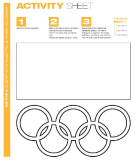

The purpose of this study was to determine how acute active pc-video game affects kinematic variables and muscle activities of adolescents. Fourteen middle school students(age: 15.9±0.7 yrs, height: 171.3±6.1cm, weight: 60.0±5.4 kg, right handed) who have no musculoskeletal disorder were recruited as the subject according to having experience in using the pc-video game for more than six months. Maximum angle, angular velocity, and muscle activity of the upper extremity were determined for each trial. For each dependent variable, a paired t-test was performed to test if significant difference existed between pre- and post a 60 minute active pc-video game(p<.05). This study found that one hour pc-video game hour may not affect on movement and ROM of the finger and the wrist, whereas it may have an effect on muscle activity of the upper extremity. It seems that repetitive movement pattern during an active pc-video game may hinder muscle activity of adolescents’ upper extremity. Part of the increase in musculoskeletal disorders is linked to the amount of time adolescents are allowed to play video games. This study found that an active pc-video game appears to have negative effects on the upper extremity muscles. Since wrist movements are continually repeated throughout the video game, carpal tunnel syndrome may possibly be caused by long-term exposure to video games.

